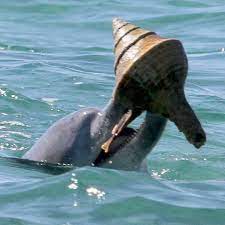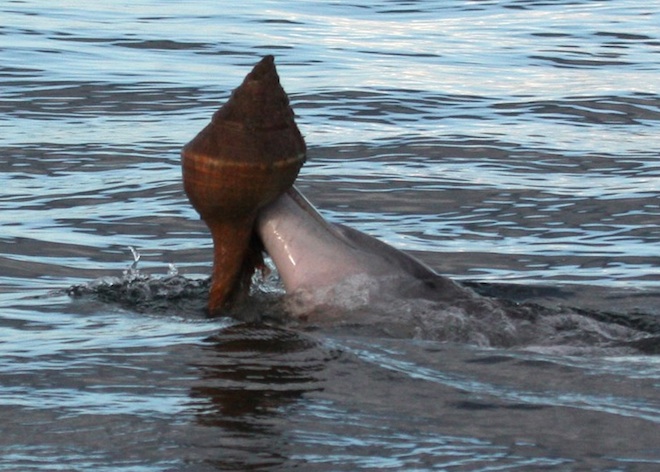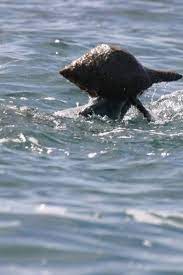Dolphins Exhibit Surprising Ability to Learn Hunting Skills from Peers, Similar to Great Apes
Dolphins have been observed picking up new hunting skills from non-family members, similar to great apes, according to a recent study. Biologists studying dolphins off the coast of Australia discovered that the mammals were able to imitate each other and learn a hunting technique involving shaking hidden prey out of discarded shells.
This type of learning, known as “horizontal transmission,” has never been observed in dolphins before, although it is common among gorillas and humans. The researchers were surprised by these findings since dolphins are generally conservative in their foraging behaviors, with calves typically following their mother’s lead.
The study was conducted in Shark’s Bay, Western Australia, where the researchers carried out boat-based surveys to observe the dolphins. They witnessed the dolphins using a foraging technique called “shelling,” which involves using empty sea snail shells to access hidden prey on the seafloor. The dolphins would carry the shells to the surface using their beaks and shake out the trapped fish.
Over the course of their study, the team monitored more than 1,000 dolphins and observed over 40 instances of shelling performed by nearly 20 individuals between 2007 and 2018. However, they believe this is an underestimation of how often the technique is used due to the difficulty of observing the process.
Traditionally, hunting techniques like shelling are passed down from one generation to the next through the mother, a process known as “vertical social transmission.” However, the researchers found that the dolphins in Shark’s Bay were able to learn this technique from unrelated dolphins, indicating a form of horizontal transmission.
This discovery suggests that dolphins have the ability to behaviorally adapt to changing environments by learning from their peers. The rapid spread of novel behavior across populations through horizontal transmission could help dolphins cope with environmental challenges. For example, an unprecedented marine heatwave in 2011 led to the loss of seagrass habitat in Shark’s Bay, causing a decline in fish and invertebrates, including the gastropods that inhabit the giant shells used for shelling. The researchers speculate that this prey depletion may have created learning opportunities for the dolphins to adopt new foraging behaviors.
This study is the first to document horizontal transmission of hunting techniques among toothed whales, which include dolphins, porpoises, beaked whales, and sperm whales. The findings provide further evidence of cultural similarities between dolphins and other species, such as great apes, chimpanzees, gorillas, and humans. Understanding the capacity for cultural transmission in dolphins can contribute to our knowledge of their social and cognitive abilities.
Hits: 0










